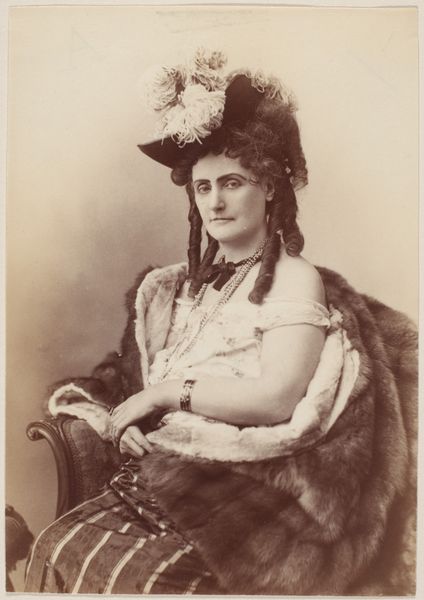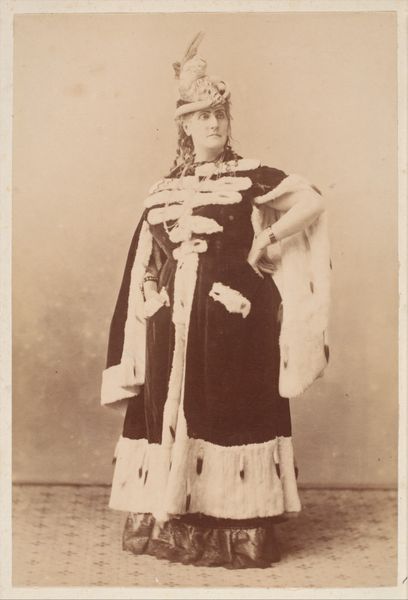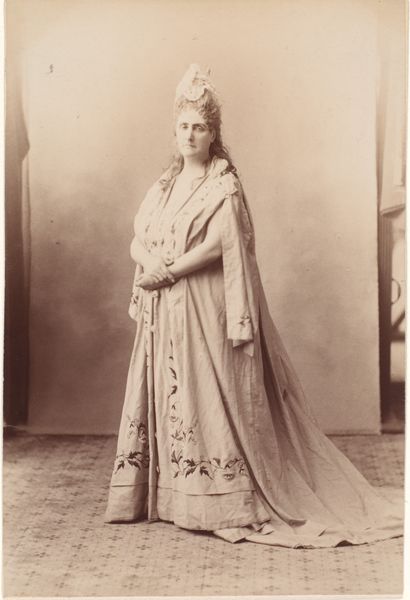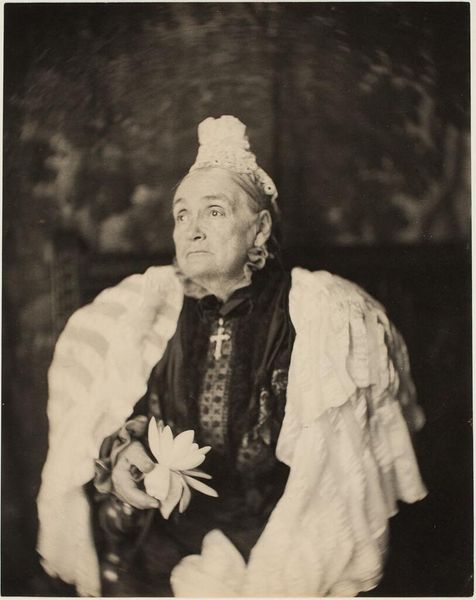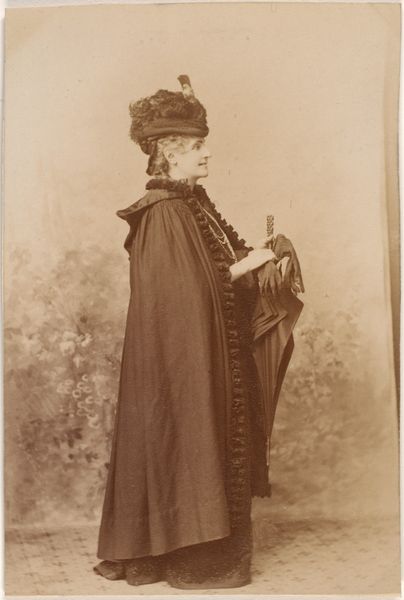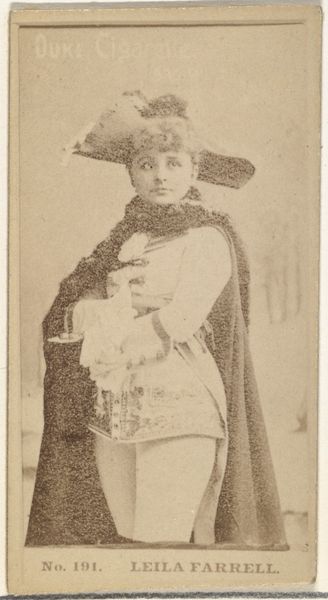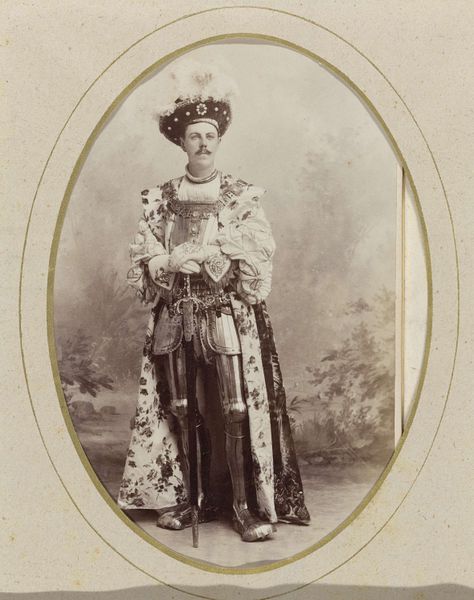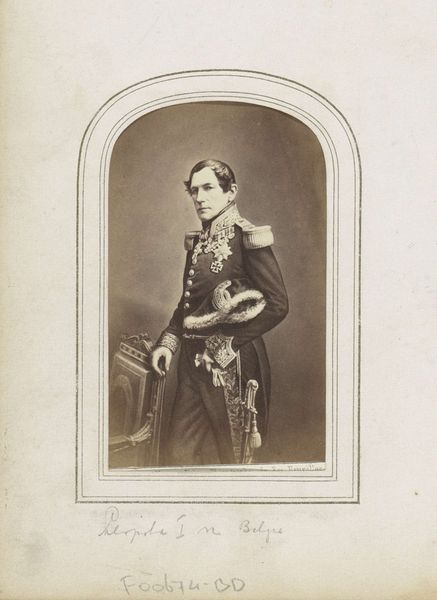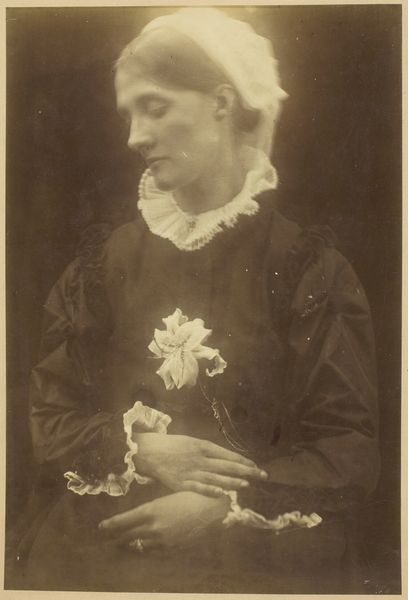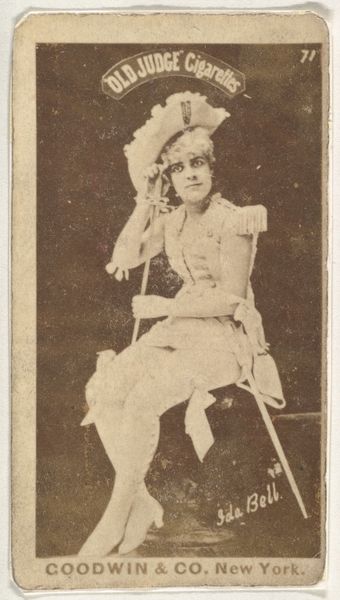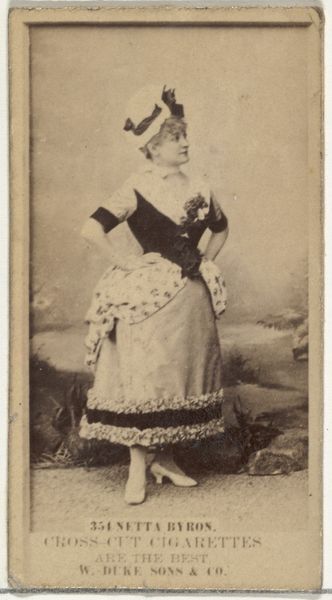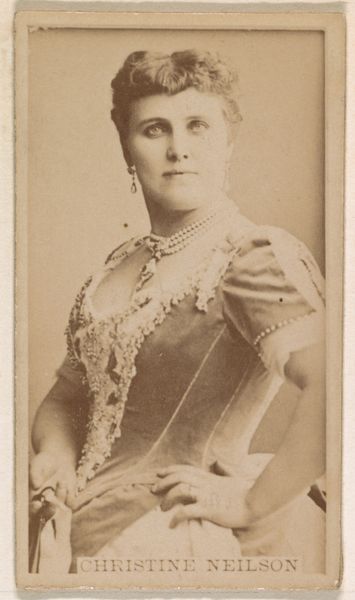
photography
#
portrait
#
photography
#
surrealism
Dimensions: Image: 14.4 x 10 cm (5 11/16 x 3 15/16 in.) Mat: 35.6 x 27.9 cm (14 x 11 in.)
Copyright: Public Domain
Curator: I am immediately struck by the intense detail of the fabrics. Editor: Indeed. What we're looking at is Pierre-Louis Pierson's "Le Manteau d'Hermine," taken in 1895. It currently resides at the Metropolitan Museum of Art. I find the overt references to royalty compelling; an ermine cloak instantly evokes a sense of inherited power. Curator: You can almost feel the weight of that ermine cloak and velvet fabric. What was the means for processing photography at that time? Was each portrait specifically created by hand to ensure its development? I want to know about the means of image production and all the people who worked to manifest Pierson's portrait. Editor: I would like to suggest this particular work references a bygone era; perhaps as a visual lament of a society in transformation or, instead, perhaps meant to simply preserve this moment of overt wealth and power. Notice how the pearl strands draw our eyes to the very center of the composition? They suggest, quite strongly, the wealth and status of the sitter. Curator: Right, the pearls –likely acquired through extractive colonial practices that violently impact communities through their acquisition of those very materials! As far as wealth display, notice how those shimmering orbs sit against the rough fur trim, its fabrication dependent upon violent extraction? It shows how raw materials go from brutal death to symbols of high status. Editor: Perhaps… The fur, the jewels… aren’t these simply representations, imbued with specific cultural values, but still abstracted from that raw production? Doesn't their juxtaposition create a distinct psychological tension? We have softness, then sharpness; exposed vulnerability, and masked identity. Curator: In this period, photography offered access to new aesthetic realms and challenged established ways of seeing class and power. Still, who held control of image production at that time? I would be curious to learn more about Pierson's studio! What class were those studio workers? Did those roles offer opportunities to ascend socially or advance access to the visual field? Editor: Those questions certainly demand more research. Personally, I still find myself captivated by how this portrait transcends a simple representation. Curator: As compelling and aesthetically beautiful as this photographic image remains today, my goal as an Iconographer lies in drawing awareness to the complicated matrix of systems used to uphold power, both at the moment this photograph was captured and today. Editor: A goal well stated! And an important addition to this particular conversation.
Comments
No comments
Be the first to comment and join the conversation on the ultimate creative platform.
